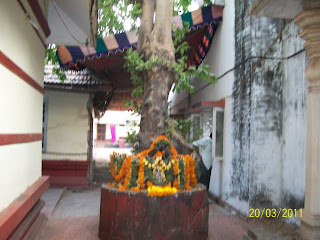Kahlil Gibran as a Nature Lover is ackd and admired over the world and even Religious Teachers quote him. Quote" A powerful advocate of the unity of being and of universal love on the one hand, and as the child of nature and creation par excellence on the other. And in his posthumous works written in English, the environmental message of Gibran reaches its peak, notably in the gentle compassion of "The Wanderer"
The Lebanese poet and philosopher Kahlil Gibran (1883-1931), best known as the author of book -The Prophet,
--REF
KAHLIL GIBRAN:
POET OF THE ECOLOGY OF LIFE
BY DR. SUHEIL BUSHRUI
All things in this creation exist within you, and all things in you exist in creation; there is no border between you and the closest things, and there is no distance between you and the farthest things, and all things, from the lowest to the loftiest, from the smallest to the greatest, are within you as equal things. In one atom are found all the elements of the earth; in one motion of the mind are found the motions of all the laws of existence; in one drop of water are found the secrets of all the endless oceans; in one aspect of you are found all the aspects of existence. - Kahlil Gibran.
The Lebanese poet and philosopher Kahlil Gibran (1883-1931), best known as the author of book -The Prophet, is widely regarded as a man of the East who brought a much needed element of spirituality to the West. But he was far more than that. Brought up in a breathtakingly beautiful countryside and steeped in a tradition that synthesized the great legends of Adonis and Astarte - the gods that were an integral part of the natural world of the imagination - he became one of the most environmentally aware writers of the early 20th century. He saw the body of the world as an outward manifestation of the divine essence, not as an object to be manipulated, rearranged and remade according to material desires and whims.
2 Pics of Kovalam taken by me at TAJ, Vivanta.
1) Said a tree to a man, "My roots are in the deep red earth, and I shall give you of my fruit."
And the man said to the tree, "How alike we are. My roots are also deep in the red earth. And the red earth gives you power to bestow upon me of your fruit, and the red earth teaches me to receive from you with thanksgiving."
2) "These plants that live upon the tree draw the milk of the earth in the sweet stillness of night, and the earth in her tranquil dreaming sucks at the breast of the sun.
3) "We live upon one another according to the law, ancient and timeless. Let us live thus in loving-kindness. We seek one another in our aloneness, and we walk the road when we have no hearth to sit beside.
"My friends and brothers, the wider road is your fellow-man.
Gibran establishes the true relationship between man and nature. With his view of heaven in a dewdrop and the phenomenon of the stars themselves speaking to him Gibran's speaks of the world in which nature is both his mother and his sister.
UNQUOTE
Most inspiring
TR
---------------------------------------------------------------------------------



















